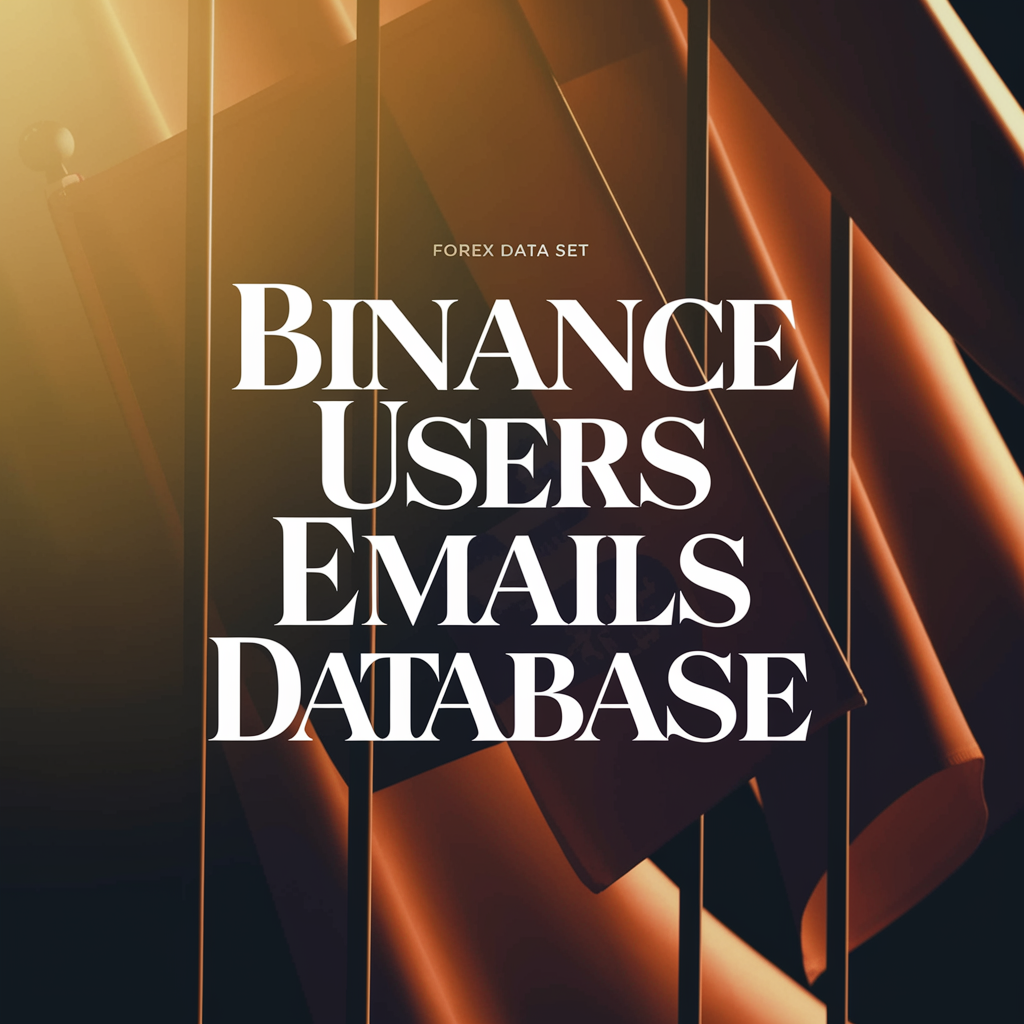Binance Users Emails Database
Are you looking for an effective way to reach real cryptocurrency users? The idea of buying a Binance Users Email Database might seem like a quick shortcut. After all, Binance is one of the biggest cryptocurrency exchanges globally, with millions of active traders.
But before purchasing a list of Binance user emails, it’s crucial to understand what’s included, how the data is collected, and the risks involved.
Let’s break it down clearly.
What Is a Binance Users Email Database?
A Binance Users Email Database is a collection of email addresses claimed to belong to people who have signed up or traded on Binance. These lists are often sold as highly targeted crypto leads, perfect for businesses and marketers promoting crypto products or services.
The data usually includes:
-
Verified email addresses
-
User names (if available)
-
Country or region information
-
Type of trading (spot, futures, margin, etc.)
-
Registration or activity dates
This information is typically delivered as a downloadable file in CSV or Excel format for easy use.
Why Do People Want a Binance Email List?
Binance users are active crypto traders who could be interested in crypto tools, tokens, educational content, or investment opportunities. Having access to these contacts might seem like an efficient way to:
-
Promote crypto products or services
-
Send exclusive offers and discounts
-
Drive traffic to exchanges or affiliate platforms
-
Grow Telegram groups, newsletters, or communities
-
Launch new crypto or DeFi applications
To many marketers, these lists look like a fast track to a highly focused audience.
Who Typically Uses Binance Email Lists?
Here are common users of these crypto email databases:
-
Crypto startups seeking early adopters
-
Affiliate marketers promoting crypto exchanges or tools
-
Blockchain developers launching new tokens or apps
-
ICO or IDO teams looking for investors
-
Lead generation agencies focused on crypto niches
-
Crypto influencers growing communities or selling courses
However, popularity doesn’t always mean reliability or legality.
Where Do Binance Email Lists Come From?
Binance does not sell or share user data. So any list claiming to be Binance users is usually compiled from:
-
Public crypto forums and Telegram groups
-
Airdrop and bounty program sign-ups
-
Leaked or breached data files
-
Web scraping tools harvesting emails
-
Opt-in forms (some legitimate, many not)
Many of these collection methods are illegal or unethical.
Risks of Using Binance Email Lists
Purchasing and using such lists comes with significant risks:
Legal Risks
-
Violates privacy laws like GDPR and CAN-SPAM
-
Using emails without consent is illegal in many countries
-
Can lead to lawsuits, fines, or bans from email service providers
Deliverability & Spam Issues
-
Unverified or fake emails cause high bounce rates
-
Emails often land in spam folders
-
Too many spam complaints can blacklist your domain
Reputation Damage
-
Cold emailing unconsenting users damages brand trust
-
Could lead to loss of access to marketing tools or permanent bans
-
Crypto users are vigilant and quick to report spam
What Makes a High-Quality Binance Email List?
If you build your own list, look for these qualities:
-
Permission-based: Every subscriber opts in willingly
-
Engaged users: High open and click-through rates
-
Clean data: Minimal bounces or invalid emails
-
Real users: Verified through sign-ups or ongoing interaction
-
Segmented lists: Grouped by interests, trading type, or location
In email marketing, quality always beats quantity.
Related Product:





